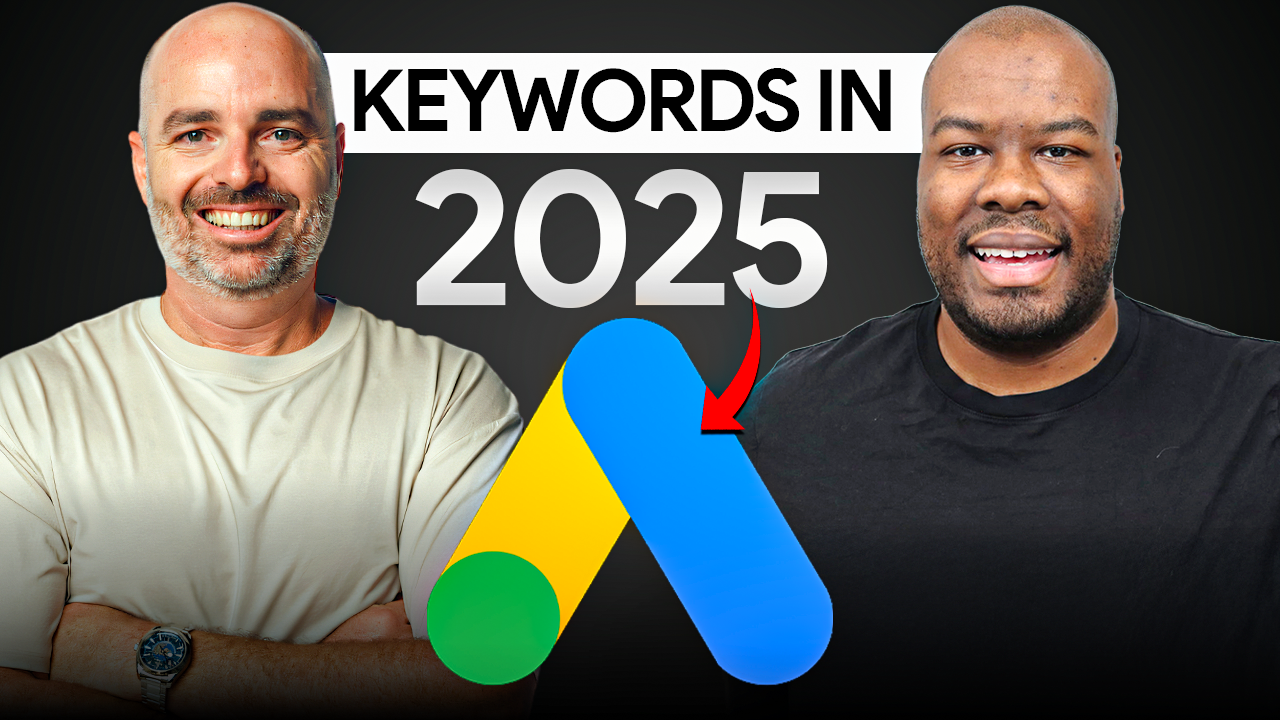
Broad vs Exact vs Phrase Match in Google Ads: A Deep Dive with Darren Taylor
Apr 02, 2025In the world of Google Ads, keyword match types have seen dramatic shifts over the years—and understanding how to use them effectively can make or break a campaign. In a recent conversation between two experienced digital marketers, the discussion centred around how match types are evolving and what that means for advertisers in 2025.

Why Your Perspective on Match Types Needs to Change
If you've been running Google Ads since the early 2010s, chances are you remember broad match modifiers, SKAGs (single keyword ad groups), and tightly themed ad group structures. Darren and Aaron reminisce about those days—but agree they’re long gone.
“Phrase match is kind of the poor man’s broad match now,” says Aaron, capturing a sentiment shared by many in the PPC community.
Here’s the breakdown:
-
Phrase Match has become looser over time, often behaving more like broad match did a few years ago. Darren noted that in his testing, phrase match often pulls in irrelevant search terms—like competitor brand names—that wouldn’t appear under exact match.
-
Exact Match is no longer truly “exact,” but still offers tighter control and tends to deliver higher-quality traffic, particularly in B2B or niche use cases.
-
Broad Match has evolved dramatically, thanks to Google’s increasing ability to understand user intent using machine learning. Darren, once a skeptic, now embraces it—especially for accounts with rich conversion data.
“Google’s intent matching is so good now that sometimes the strangest search terms still convert,” Darren explained.
When to Use Each Match Type
1. Broad Match: Great for B2C & High-Volume Accounts
If your business has a healthy volume of conversions and operates in the B2C space, broad match can unlock significant scale. Darren highlights how surprising it is that even short, seemingly generic keywords like “Wi-Fi” can generate high-quality leads when intent signals are on point.
2. Exact Match: Still the Go-To for Niche or B2B Campaigns
In more specialized industries—like AV hire or industrial engineering—exact match is often the only way to avoid consumer spillover. It gives advertisers the control needed when a bad lead could cost more than just budget—it could waste sales time and skew ROAS metrics.
3. Phrase Match: Use with Caution
Both Aaron and Darren agree: phrase match has become a less reliable tool. It may still work in some legacy campaigns or specific cases, but generally speaking, most new accounts can skip it in favor of exact or broad.
How Match Types Impact Keyword Research & Structure
Gone are the days of building 20 ad groups with hyper-segmented SKAG structures. Thanks to broad match and Google's machine learning, Aaron recommends starting small—even with just a few keywords and two or three ad groups.
“If you’ve got five ad groups, usually two will take all the spend,” he explains. Google prioritizes what works, and if it finds performance in one ad group, it will double down.
Darren agrees. His keyword research today focuses more on relevance than volume. There’s no harm in adding lots of relevant keywords, but it’s not essential for performance. Simpler structures now outperform overly complex ones.
What’s Coming Next: Search Max & The Future of Google Ads
A hot topic in the PPC community right now is Search Max—a rumored evolution of search campaigns that combines elements of dynamic search ads and broad match targeting.
While Darren notes that Search Max doesn’t introduce anything entirely new, it points toward a trend: simplification. Google wants to lower the barrier to entry for advertisers, especially newer ones. The idea is simple: give Google your website and goals, and let the machine do the rest.
This ties into broader shifts in the way people search.
“We’re heading toward a chat-based search experience,” says Aaron. “Google knows that ChatGPT and AI-driven platforms are changing user behavior. So they’re adapting.”
In the future, search results may no longer show 10 blue links and a handful of ads. Instead, an AI assistant might recommend one or two businesses—and Google wants to be the one making those recommendations, not just linking out.
👉The future of Google Ads Specialists
Final Thoughts: Adapt, Don’t Resist
Aaron and Darren agree—marketers need to focus on the bigger picture. These changes aren’t arbitrary. They’re designed to create a more user-friendly, intent-driven search experience.
If you’re in B2B or a niche space, you’ll likely still rely on exact match and manual control. But if you’re in B2C with conversion data to work with, broad match is likely your best tool.
The key takeaway? Adapt to the platform. Don’t cling to outdated strategies. Stay open to testing new features, simplify your structures, and always keep the end business goal in focus.
